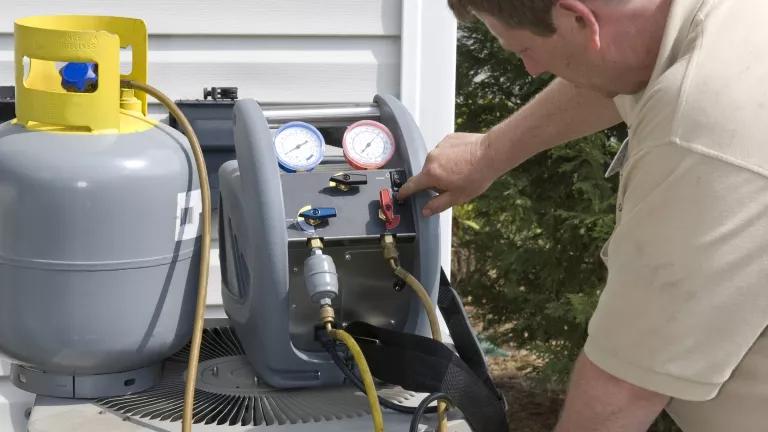Review of EPA Power Plant Rules Should Wait
NRDC and our allies filed a brief today urging the Supreme Court to decline to review the D.C. Circuit’s January decision striking down the Trump EPA’s repeal of the Clean Power Plan (CPP) and its do-nothing replacement, the so-called Affordable Clean Energy (ACE) rule.
NRDC and our allies filed a brief today urging the Supreme Court to decline to review the D.C. Circuit’s January decision striking down the Trump EPA’s repeal of the Clean Power Plan (CPP) and its do-nothing replacement, the so-called Affordable Clean Energy (ACE) rule. Our coalition of public health and environmental groups lined up alongside the Biden EPA and supportive states and power companies to argue that since neither the ACE rule nor the CPP is in effect, now is not the appropriate time for the Supreme Court to weigh in.
The Trump EPA had interpreted Section 111 of the Clean Air Act as restricting standards for existing power plants to physical measures implemented at the plant site alone, and as prohibiting the wider range of cost-effective emission reduction measures that power companies actually use to manage emissions, including using cleaner plants more and dirtier plants less. The Trump EPA had based its repeal of the CPP on that erroneously restrictive interpretation, and had adopted a replacement rule limited to only minor “heat-rate” improvements at the plant itself.
On January 19th the D.C. Circuit delivered a 2-1 ruling that EPA got the statute wrong. The court held that the Clean Air Act gives EPA the authority and responsibility to make meaningful carbon pollution reductions, and does not rule out using those broader and more cost-effective methods. The court also rejected a far-fetched argument—rejected by every administration since the first President Bush—that a drafting glitch in the 1990 Clean Air Act Amendments removed EPA’s authority to curb existing power plants’ carbon emissions under Section 111.
The very next day, newly-inaugurated President Biden issued an executive order directing agencies to revisit all Trump rules that conflict with the new administration’s national objectives “to improve public health and protect our environment” and “to reduce greenhouse gas emissions,” among other priorities.
EPA Administrator Michael Regan has said the Agency will undertake a new rulemaking to limit carbon pollution from power plants “starting with a clean slate.” Administrator Regan recognizes that the power sector has undergone a massive shift towards reliance on cleaner energy since the 2015 CPP—in fact, by 2019, annual power sector carbon dioxide emissions had already dropped below the levels the CPP intended to achieve in 2030, even though the CPP never went into effect.
Impressive as that is, power plants still emit an enormous amount of carbon pollution, and there’s a lot more they can do to reduce those emissions and the climate and public health harms they cause. So in the new rulemaking, EPA will have to address how to keep power sector carbon pollution on the decline.
Instead of waiting for the new rulemaking—and ignoring the Biden EPA’s clear message that it will not implement either the 2015 CPP or the 2019 ACE rule—a number of coal companies and fossil-producing states asked the Supreme Court to overturn the D.C. Circuit’s decision.
Notably, not a single power company that would actually be subject to the forthcoming EPA regulation joined them. In fact, a coalition of power companies has joined the Biden administration in urging the Supreme Court not to take up the case.
The coal company and red state petitioners offer a variety of exaggerated predictions about how EPA might exceed its statutory authority in a new rulemaking, but they can only speculate about what the next rule may look like. There’s no actual rule in place for the Supreme Court to review, and the Court does not offer advisory opinions on hypothetical future rules. Courts review only final administrative actions with real-world impacts. As our briefs argued today, the Supreme Court should deny these petitions, and wait for EPA to issue a new rule supported by a new record.



